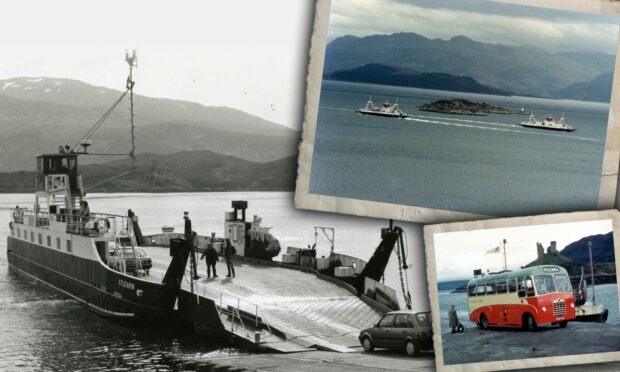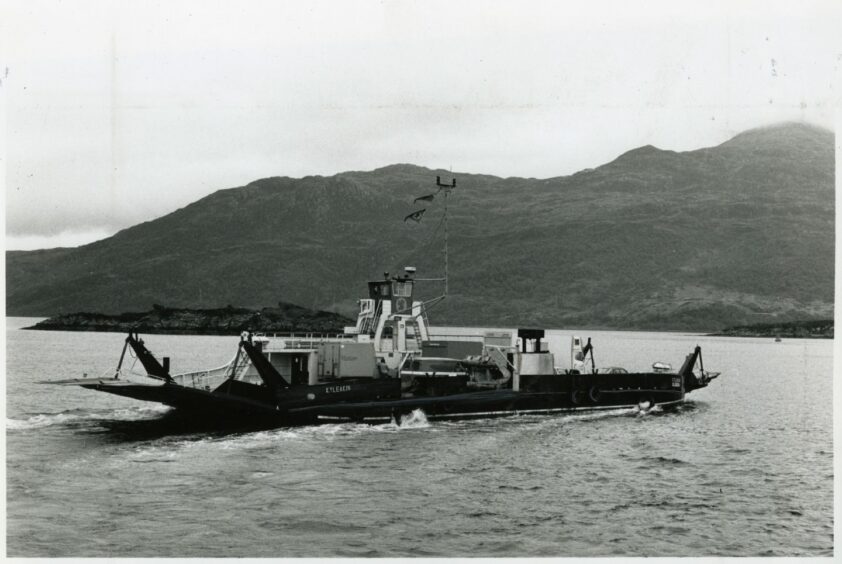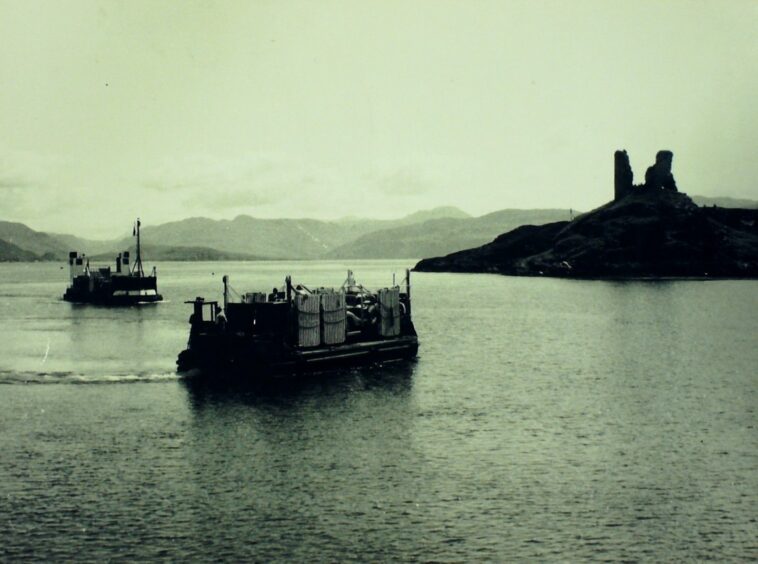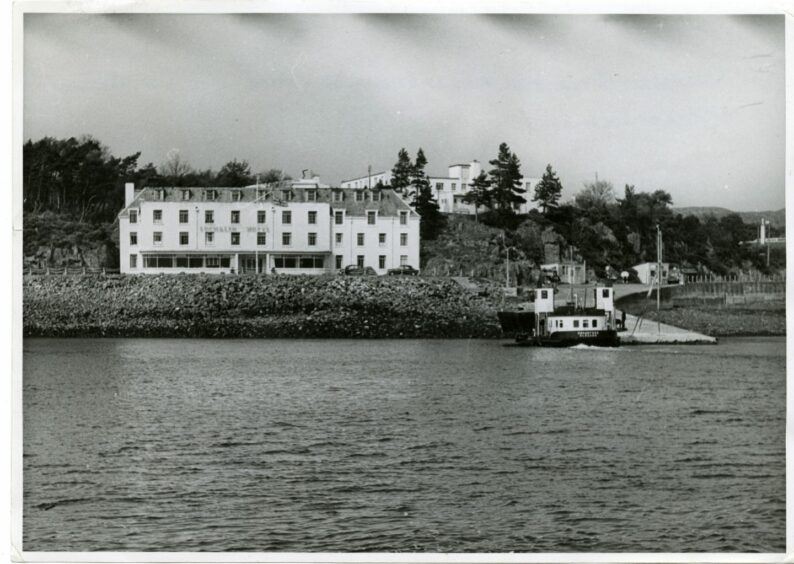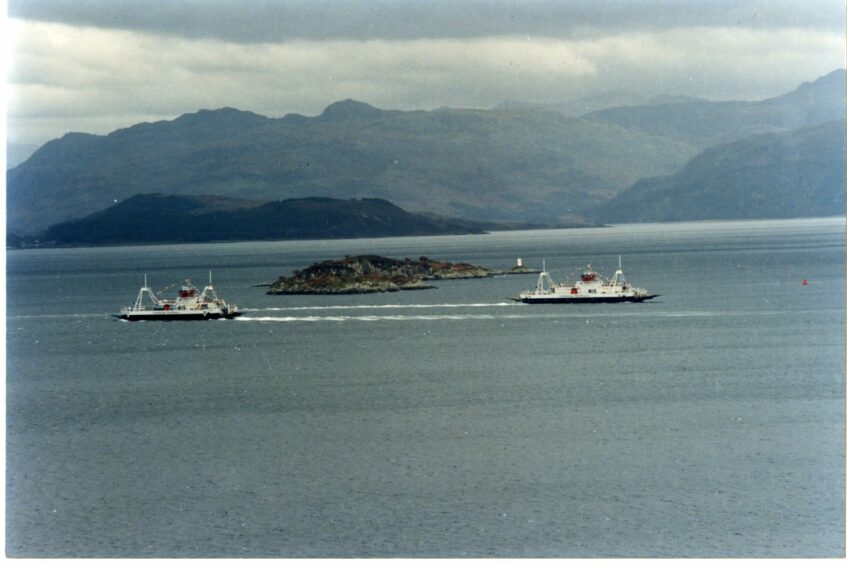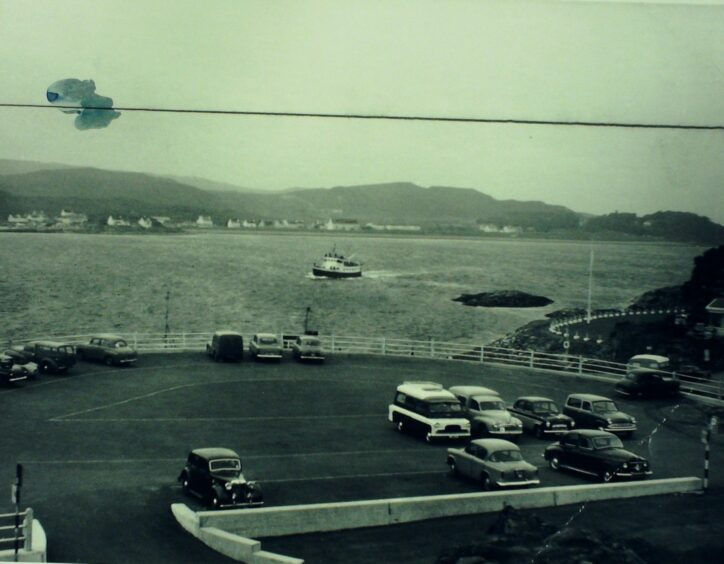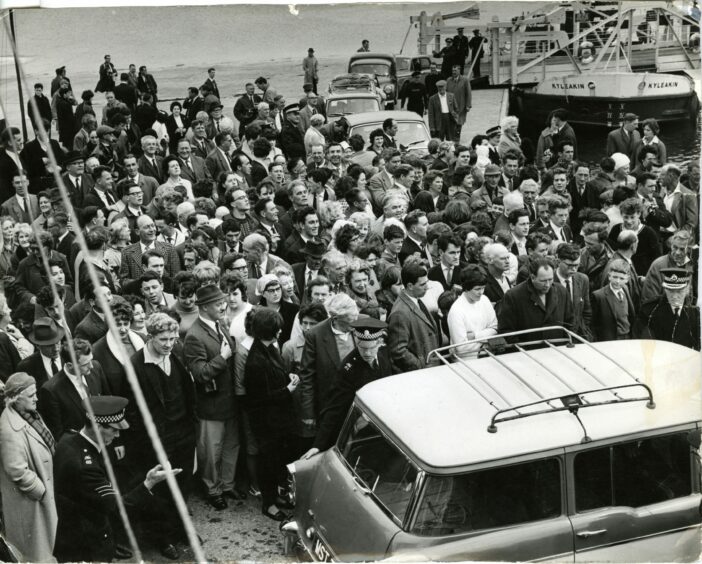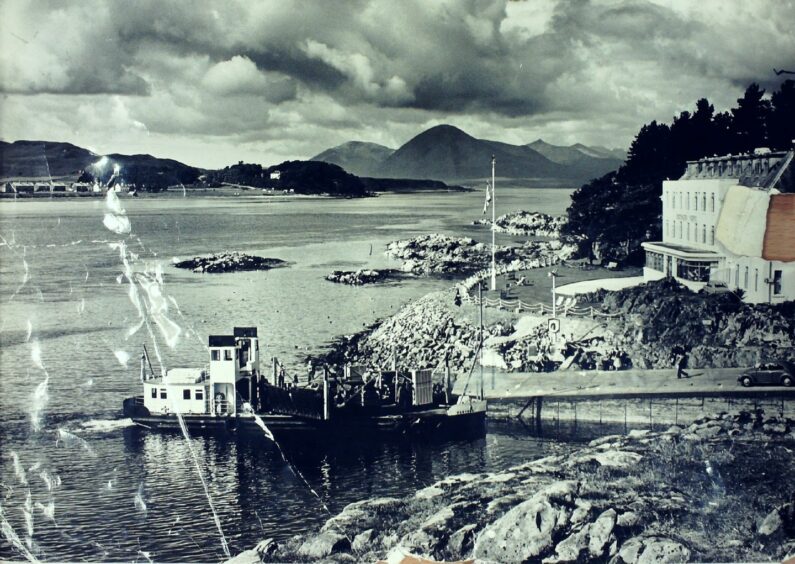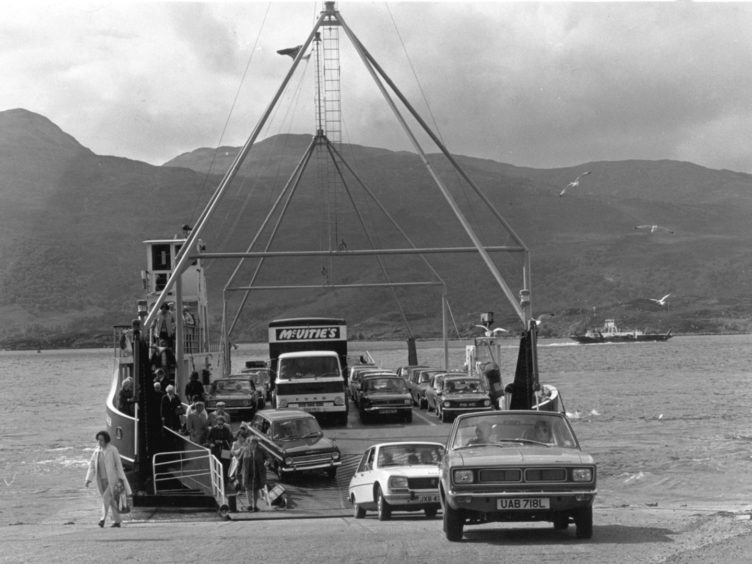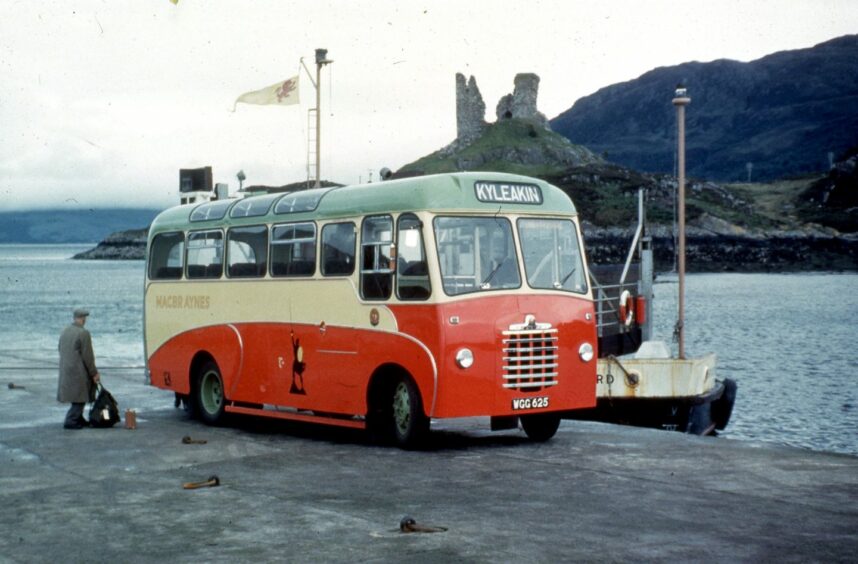It seems incredible to think that a substantial car-ferry service between Kyle of Lochalsh on the mainland and Kyleakin on Skye was only in operation for 25 years.
But what a quarter century, from 1970 to 1995, opening up new commerce and tourism on the island.
Waiting for the ferry at Kyle added to the magic and anticipation of a holiday on Skye, although it could drag on a bit in the later years due to excessive demand.
Weather could stop play at any point, but it was an ill wind that stopped the ferry sailing — pennies from heaven for the small businesses at either end.
Failure of the ferry service was a major cause of frustration to locals who quickly got used to easier access to the mainland.
Early ferry service very limited
Prior to 1970, a tiny wood-hulled turntable ferry, Kyleakin, with capacity for one car began operations plying between Skye and the mainland in 1930.
Six years later, the Moil, a ferry capable of carrying two cars arrived.
Small acorns, but an improvement on the launches which had previously worked the route.
In 1942 another ferry, the steel-hulled Cuillin, capacity two cars, began working the route, followed by the almost identical Lochalsh in 1951.
Advances came between 1952 and 1969 when turntable ferries with capacity for four or six cars came into operation, but in the face of burgeoning car ownership they struggled to cope with demand.
A 12 hour queue wasn’t unusual in the summer months.
The Kyleakin was the 28 car ferry which started the transformational service in 1970, soon to be joined by sister ship Lochalsh.
The two ferries worked the route until 1991, when they were replaced by two 36-car ferries, Loch Fyne and Loch Dunvegan.
The writing was on the pier however- the case was there for a fixed link, and the bridge opened on October 16, 1995.
It was the end of an era.
Both the magic and the frustrations of ferry travel over the sea to Skye were over.
Not everyone was thrilled with the bridge however- former oilrig worker Evander Macrae proposed a new 50-passenger boat to lure locals and tourists away from the £2m private-sector bridge with its high tolls.
He was offering fares of just £1 on the new boat, 50p for youngsters as against the toll of £11.40.
Controversial Sunday sailings
Sunday sailings had been controversial for decades before the 1970 service began.
In 1964, Cameron of Locheil thought starting the service not earlier than 1pm was a decent compromise, but the strict Sabbatarians decreed this would be a ‘major tragedy’.
In 1965, it was reported that 85% of islanders had signed an anti-ferry petition, which was rejected by the Scottish secretary.
The next move was to draft a petition to the Queen to be signed by every churchgoer on the island.
The quarrel took a bitter turn when the Free Church moderator Angus Smith of Skeabost led a sit-down protest at Kyleakin on the occasion of the first Sunday sailing on June 6, 1965, and was carried away by police.
The Church of Scotland’s response was to condemn the demonstration as ‘the most massive breach of the Lord’s Day that Skye has ever known.”
Sunday sailings went ahead that year, despite fears they would erode the island’s treasured way of life.
The ferry service had its highs and lows
A terrifying drama came in 1988 when the Royal Navy had to be brought in to rescue the Lochalsh which had ended up adrift off Skye in mountainous seas.
One of the two hydraulic cylinder mountings holding the front ramp in position was swept away after being struck by a wave.
“The passengers were never in any real danger,” said CalMac’s traffic manager Ken Duerden.
Digger drama
And in 1970, one of the worst hold-ups ever occurred when a giant digger bound for Stornoway slid off the jetty and into the water as it attempted to board the ferry at Kyle.
The incident happened on a Friday night, and service wasn’t resumed until a crane lifted the digger clear by lunchtime the next day.
A fuming holiday maker told the P&J: “It was utter and absolute chaos.
“We were so disgusted that we did not even bother waiting to cross Skye and turned back and headed towards Inverness again.”
Breakdowns and industrial action also blighted the service from time to time.
And if it was none of those, the weather could frequently be relied on to disrupt the crossing.
But everyone who ever used the service, or worked on it, has their special memories of Skye crossing.
If you’d like to share your memories of the Kyle-Kyleakin ferry service, please leave a comment in the space below.
